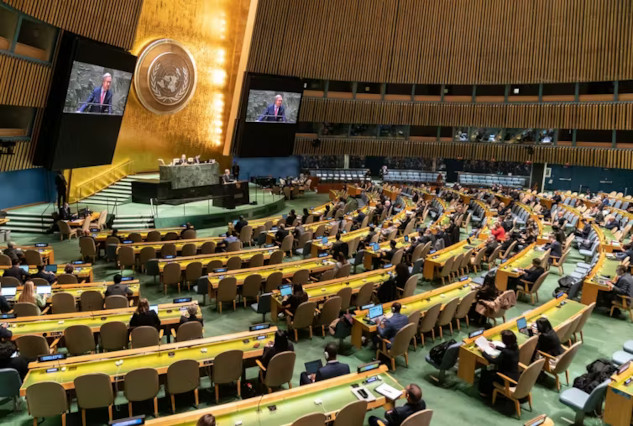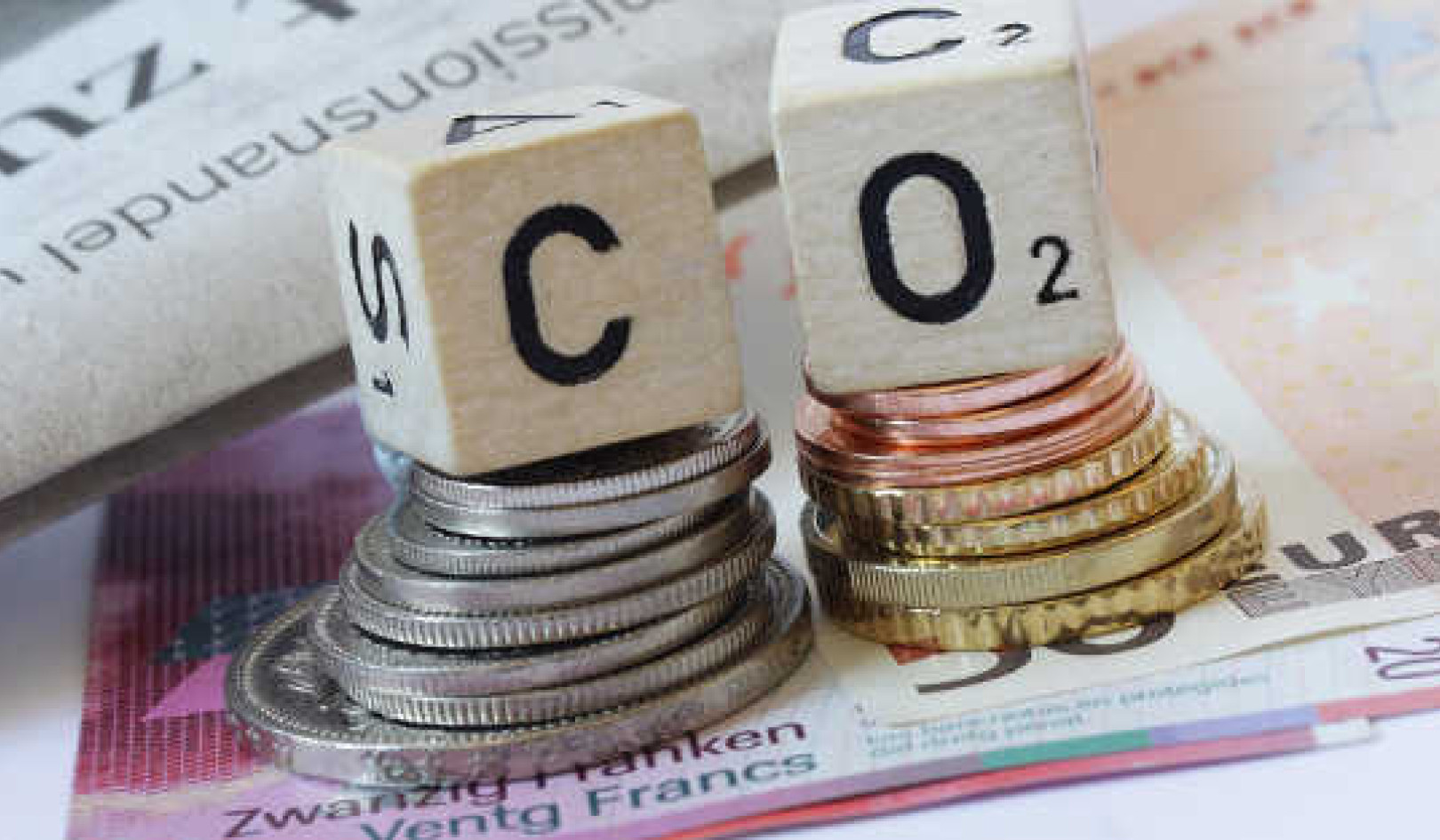
The UN’s Sustainable Development Goals were designed to address extreme poverty, social inequality, the climate crisis and the loss of biodiversity. (Shutterstock)
Gross domestic product (GDP) has long been the main indicator of economic growth used almost everywhere in the world.However, the measurement does not take into account other factors essential to a country’s growth and development, such as social inequalities, the environment and the well-being of citizens.
In the last ten years, the climate deadlock and the limits of the current economic model based on the infinite growth of capitalism have prompted discussions of a “post-GDP” era.
We are two researchers affiliated with the Centre on Governance at the University of Ottawa. In recent years, we have become interested in the question of implementing the UN’s Sustainable Development Goals framework. In this article we explain why we believe it is now necessary to think about an alternative measure of economic activity and growth.
Sustainable development, much more than an environmental issue
The United Nations’ 2030 Agenda is a universal action plan to promote sustainable development by considering social, economic and environmental aspects. It is meant to apply to all countries, even the richest.
At the heart of the agenda are 17 Sustainable Development Goals (SDGs). These cover a wide range of development challenges, encompassing aspects of human well-being, equity and social inclusion. The goals explicitly recognize that sustainable development cannot be achieved through isolated actions focused on a single dimension (the environment, for example), but require a co-ordinated effort across several domains.
The 17 Sustainable Development Goals.
Could SDGs be used to replace traditional growth measures such as GDP? This is one of the questions we raised at a conference organized by the University of Ottawa’s Centre on Governance. In this article, we provide the beginnings of an answer.
Beyond GDP
“Beyond GDP” is a new concept that expresses the need for a more inclusive and sustainable measure of development that goes beyond simply assessing a country’s economic output.
Using the 2030 Agenda as an example, this article proposes an exploratory analysis of the role of this global framework in the context of wealthy countries, using Canada and France as examples.
We identify and analyze the various policies set in place by these two countries to align their development strategies with the SDGs. Although these actions are real, they remain largely unknown to the general public. Our aim is to shed light on these initiatives and show their potential as measures of development.
Multidimensional goals
The SDGs offer an alternative, more comprehensive means for measuring countries’ progress and development and represent a clear departure from traditional economic indicators such as GDP.
The SDGs were adopted in 2015 through a negotiation process involving the 193 member states of the United Nations, to address a series of interconnected global challenges humanity faces.
But more importantly, the SDGs recognize the need for a change in direction in what is now a context of profound and rapid economic, social and environmental transformations. For example, the SDGs were designed to address extreme poverty, social inequality, the climate crisis and biodiversity loss. By contrast, as a measure of economic activity, GDP does not take into account the equitable distribution of wealth, the sustainability of growth or the preservation of natural resources.
In short, adopting the SDGs as a multiscale measure (from the most local to continental and global scales, via the national level) of countries’ growth and development could make it possible to assess countries’ progress in a more representative, fairer and more inclusive way, in line with the principles of sustainable development.
France takes action
But is it really possible to measure sustainable development? To answer this question, we first need to look at the efforts individual countries are making.
The case of France offers an interesting perspective on how to integrate SDGs into measurements of development. By hosting COP21, the UN climate conference in 2015, France not only served as a platform for the adoption of the Paris Agreement, it also took on the role of mediator between nations and helped forge a global consensus on the need to limit global warming.
France acted quickly in operationalizing the SDGs by implementing a series of strategies, initiatives and collaborations. For example, France’s Roadmap for the 2030 Agenda, published in September 2019, focuses on a fair transition and a transformation of the societal model to promote low carbon assets.
In addition, French policies emphasize citizen participation in the choice of projects to be carried out. For example, the town of Saint-Fons has developed a “sustainable development framework plan” to register, review and assess its actions and projects in relation to the implementation of the SDGs in its urban area.
And what about Canada?
The process of integrating the SDGs in Canada, although more recent than in France, is showing encouraging signs through various ongoing initiatives.
In 2021, Canada adopted a national strategy for the 2030 Agenda — Moving Forward Together. For Canada, this represents, first and foremost, a commitment to meet its international obligations to the United Nations by aligning its actions with the 17 SDGs, while adopting a more holistic approach to improving the economic, social and environmental well-being of its population.
In order to quantify the SDGs, indicators need to be put in place and information collected. To do this, Statistics Canada created the Global Indicator Framework for the Sustainable Development Goals Data Hub, which plays an important role in monitoring and reporting Canada’s progress on the SDGs to the United Nations. This online portal offers freely accessible data.
Although this project is still in its first steps, Statistics Canada is continuing to examine different sources of data that could potentially be used to report on the SDGs to international bodies such as the UN, as well as internally to various Canadian stakeholders, including governments, the private sector, civil society and communities.
A colossal task
Despite this progress, there is still a huge amount of work to be done. Adopting the SDGs as a measure of development in rich countries requires a major paradigm shift. Many challenges need to be overcome, particularly in terms of methodology, data collection, policy implementation and social acceptability.
The SDGs and their indicators represent a useful and innovative instrument for measuring the development of societies that takes into account a multiplicity of social and environmental factors, as well as political and economic ones.
Even if achieving the SDGs or decarbonizing the economy by 2030 seems unattainable, they are still legitimate. Not achieving all the targets doesn’t mean we should give up trying. This is provided, of course, that we take a step in the right direction by adopting a holistic approach to sustainable development, as opposed to using strictly economic indicators such as GDP. The vision proposed by the SDG framework provides a framework and objectives for guiding and implementing public policies that are better adapted to current and future challenges.![]()
Eric Champagne, Professeur agrégé, École d'études politique, Directeur, Centre d'études en gouvernance / Associate professor, School of Political Studies, Director, Centre on Governance, L’Université d’Ottawa/University of Ottawa and Cristina D'Alessandro, Chercheure associée au Centre d'études en gouvernance, L’Université d’Ottawa/University of Ottawa
This article is republished from The Conversation under a Creative Commons license. Read the original article.
books_economics






















